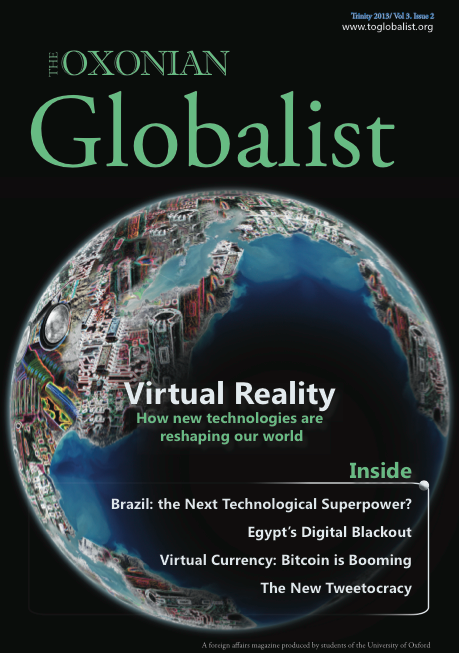
Navigating the Separation Barrier: A stark physical reminder of a divided country. Photo by Shoshana via Flickr.
“French is a language you learn out of interest. Italian, too. Arabic? No. There’s something more to that. I ask you again, why are you learning Arabic?”
This is a snippet of an approximately 40-minute conversation I had with El-Al security personnel at Luton airport, trying to board a flight to Tel Aviv. This summer I ended up in the rather unusual position of studying Arabic in Israel. Having come to the realisation that the number of people my Classics degree enabled me to talk to was limited to a handful of dons and cardinals, I decided to switch to a joint honours, Classics with Oriental Studies, that would see me starting Arabic in Michaelmas of this year. As preparation, I resolved to do a summer course. The Hebrew University was highly recommended to me, and had the advantage of being in a country that was safer and more stable than the other recommended schools in Syria and Egypt. Little did I suspect that I would not only gain an education in Arabic grammar, but also insight into why the Israel-Palestine conflict is such an intractable problem.
My conversation with El-Al security was only my first taste of the deep-seated distrust that pervades Israeli-Palestinian relations. When I checked-in at the accommodation provided, I met a full-time student who, upon learning that I was studying Arabic, remarked, “Great language, shit people. You have to be careful around here, you will see him [any Arab] in the street”. It turned out that this harsh view was based on a superficial knowledge of the Palestinians. My new acquaintance had spoken only to a handful of Arabic-speaking students at the Hebrew University, and said he did his best to stay away from them. At least this student did have some minimal knowledge of Palestinians studying at the Hebrew University of Jerusalem. Contact with Palestinians who had not accepted Israeli citizenship was virtually non-existent.
Containing Conflict
An obstacle to communication between Israelis and Palestinians is what the Israelis describe as the “security fence” and what the Palestinians call the “racial segregation wall”. This barrier between the two communities was erected in 2003 in an effort to stop terrorist attacks during the second Intifada. It is an undeniable fact that the wall has been highly successful in protecting Israeli citizens. Suicide bombings, which killed 293 Israelis between 2000 and 2003, have now become a rarity. The majority of Israelis I talked to were thankful for the barrier; although a few lamented that it was necessary to build it in the first place.
Though the barrier may have increased security, it has had the side effect of making attempts to bridge the divide between the two communities more difficult. I spoke to one Palestinian cab driver, Akhil, who told me he had Jewish friends, but was now unable to visit them because of the separation barrier that runs through Jerusalem and around the West Bank. It is possible for Palestinians to cross the barrier, but only with the proper permits. The same holds true for Jewish-Israelis, but permits are much harder to come by. Akhil was denied a permit as he had been falsely accused by a fellow Palestinian of throwing rocks at the IDF (Israeli Defence Force), and had served a prison sentence as a result. The restriction of passage from Palestine to Israel clearly fosters distrust.
But perhaps the most serious barrier to peace is that this distrust between Israelis and Palestinians is being indoctrinated into the next generation. The first talk given to arriving summer course students at the Hebrew University concerned safety. The central message was to avoid any Palestinian or Muslim areas: Do not go into the Muslim quarter of the old city. Do not use the Arab buses. Under no circumstances do you cross the wall. After the talk, the majority of students were terrified and, as a result, none of the Jewish students agreed to accompany a few friends and me in visiting Bethlehem or Ramallah. Rather, Jewish students went out of their way to avoid meeting Palestinians. One of the guided tours the University offered was entitled “Diversity in Jerusalem”, which featured on its itinerary a visit to a Muslim Youth Centre in the heart of the Old City. Of all the tours offered, this was the least subscribed to. Although a highly informative trip, it simply was not taken advantage of by the majority of students.
The distrust I encountered among Israelis was also evident on the Palestinian side. The Palestinians I talked to in Bethlehem and Ramallah were as reluctant as the Israelis to interact with their neighbours. Whilst playing a game of impromptu football with some Arab-Israeli youths, I asked one of them whether they ever play against Jewish Israelis. The answer was an emphatic “No!” and it was made clear to me in no uncertain terms that they never wanted to play with Jewish Israelis. Although Jewish and Arab districts were situated side-by-side, the inhabitants were entirely segregated from each other.
Building Bridges
My summer visit to Israel made it clear to me not only how intractable the Israeli-Palestinian conflict is, but also how it permeates the daily lives of ordinary Israelis and Palestinians. The lack of dialogue at the government level about how to solve the Israeli-Palestinian issue is mirrored in the absence of dialogue amongst the people. Their fear of interaction means that both sides’ understanding of one another is based on stereotypes and misinformation. This all-pervasive distrust deepens the political issues that exist between the two communities and makes them even harder to resolve. And yet the impression I received was that the majority of people on both sides want a peaceful solution. They just don’t understand, or even know, that the other side wants that, too.
A first step towards achieving this goal would be to think of ways of building bridges between the two communities in order to dispel the harmful stereotypical views each side has of the other. This is by no means an easy task, but a beginning could be made simply by talking to people on both sides. And this is where students from abroad can play a role – not by taking sides, but by going over to Israel or Palestine and talking to both Israelis and Palestinians. In doing so, we may become small but important links between these two troubled communities.



